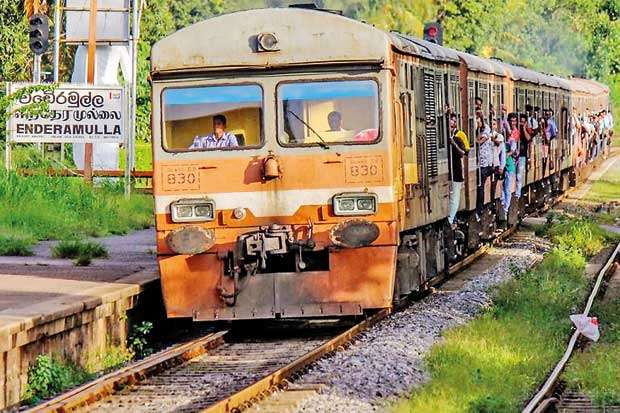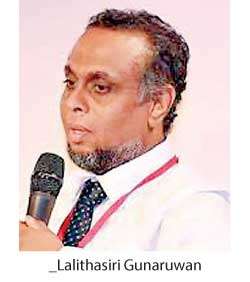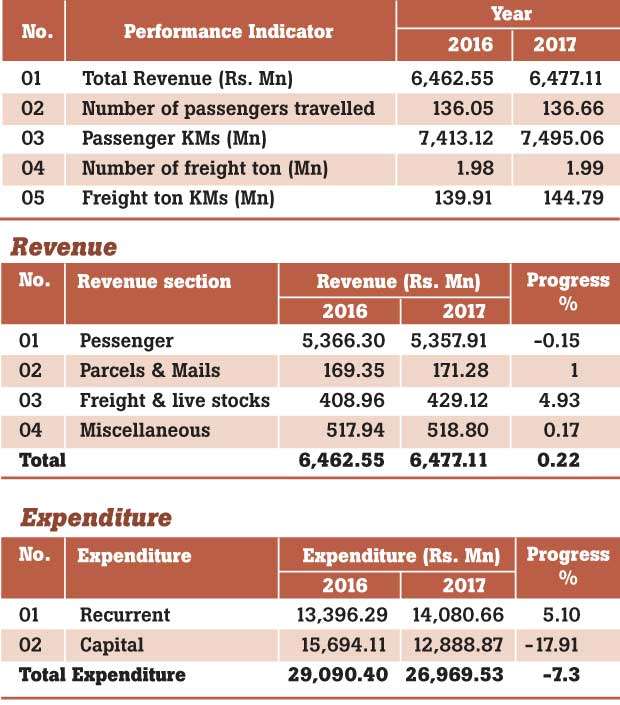Reply To:
Name - Reply Comment

 Public transportation now in Sri Lanka has developed to a certain extent that most people tend to use them. Modes of public transport in Sri Lanka comprise buses, cars, trains, tuk tuks (Three wheelers) and helicopters. Among the mentioned modes, the train is the most commonly used mode for travelling in terms of convenience and low charges. Sri Lanka Railways has had its ups and downs after Sri Lanka gained independence from the British. However, concerns have been raised regarding the lack of substantial development in the Sri Lanka Railways.
Public transportation now in Sri Lanka has developed to a certain extent that most people tend to use them. Modes of public transport in Sri Lanka comprise buses, cars, trains, tuk tuks (Three wheelers) and helicopters. Among the mentioned modes, the train is the most commonly used mode for travelling in terms of convenience and low charges. Sri Lanka Railways has had its ups and downs after Sri Lanka gained independence from the British. However, concerns have been raised regarding the lack of substantial development in the Sri Lanka Railways.
This article reflects on why the relevant authorities have turned a blind eye to improving the efficiency of the railway service and further discusses the institute’s future plans in terms of raising the standard of service.
In the early days, there were only few primary level roads in the coastal areas during the rule of the Portuguese and Dutch. But there were no roads in the up country. It was very difficult for a vehicle to reach Kandy through forests and inclines. Therefore, traveling along these up country routes became dangerous. Transportation was done by men themselves. Palanquins, horses and elephants were used for the journeys by the aristocrats whereas the ordinary people traveled on foot. In such a backdrop, the British took the initiative to introduce a railway to Sri Lanka in 1864. At the outset, it was introduced as a mode to transport tea and coffee from the hill country to Colombo. Subsequently, it became an effective mode of transport.
The railway service was inaugurated with a 54-kilometre (34 mile) main line. Sri Lanka’s first intercity railway connected Colombo and Ambepussa. Eventually, the service was extended to Kandy, Nawalapitiya, Nanu Oya, Bandarawela, and Badulla. Additional lines were added to the system, including to Matale in 1880, the Coast Railway Line in 1895, the Northern Line in 1905, the Mannar Line in 1914, the Kelani Valley in 1919, the Puttalam Line in 1926 and finally lines to Batticaloa and Trincomalee in 1928. It should be noted that there was a blooming associated with Sri Lanka Railways when it was under British Empire.
No worthwhile thing would happen to the railway service on account of this transfer of powers. Hence, the Government should see that adequate authorities are provided to the SLR in order to render an effective service
Sri Lanka Railways (SLR) is a Government department functioning under the Ministry of Transport. It is a major transport service provider and is the only rail transport  organisation in the country. SLR transports both passengers and freight. At its inception, the railway was carrying more freight than passengers. But today, the service is passenger oriented. SLR’s market share for passenger transport is about 6.0 % and about 0.7 % for goods transport.
organisation in the country. SLR transports both passengers and freight. At its inception, the railway was carrying more freight than passengers. But today, the service is passenger oriented. SLR’s market share for passenger transport is about 6.0 % and about 0.7 % for goods transport.
Additional General Manager (Operations) Wijaya Samarasinghe told the Daily Mirror that Sri Lanka Railways operates approximately 396 trains which include 67 Long-Distance and 16 Intercity trains and carries about 2 Million passengers daily.
SLR owns and maintains 1561km of rail tracks, 74 locomotives, power sets 78,565 carriages and the signalling network. At present, it has a workforce of 17,634.
SLR functions under the General Manager of Railways. The General Manager reports to the Secretary of the Ministry of Transport.
According to the Sri Lanka Railways Administration Report-2016, SLR has been divided into eight Sub Departments and five Units. The sub departments are managed by the heads of the Sub Departments who report directly to the General Manager of Railways.
It should be noted that the authorities have spent billions of rupees on building highways, expressways and new link roads. But has it initiated effective projects to upgrade the railway entity? The authorities are liable to answer that question. Although some work was carried out through projects in the past, what was commenced has not been properly maintained.
One of the principles of management is authority. This principle reflects the concept of managerial authority. It underscores that authority is necessary to ensure that managerial commands are carried out. If managers do not have authority then they would lack the ability to get work carried out. Managers should use their authority  responsibly and ethically.
responsibly and ethically.
Former General Manager of Railways and Senior Lecturer at the University of Colombo, Dr. Lalithasiri Gunaruwan told the Daily Mirror that there was an imbalance at the Sri Lanka Railways when one considers the huge responsibilities and authorities designated to carry them out.
“The powers of the General Manager of Railways have been curbed and decentralised to the branches like Management Services Department, Public Service Commission, Establishment Department and Ministry of Civil Service Affairs, National Salaries and Cadre Commission and Treasury Operations Department etc.,” said Dr. Gunaruwan.
“This situation is not good for the well-being of Sir Lanka Railways. No worthwhile thing would happen to the railway service on account of this transfer of powers. Hence, the Government should see that adequate authorities are provided to the SLR in order to render an effective service to the railway service,” Dr. Gunaruwan opined.
“When issues emerge with regard to the railways, the blame is easily palmed on the Sri Lanka Railways. What most of us have not fathomed is that the General Manager of the SLR does not possess the powers over the appointments, promotions, determination of train charges and salaries and taking action regarding disciplinary issues etc. The only authority he has is to place his signature on letters,” Dr. Gunaruwan added.
Movement of Workers and Passengers for Protecting the Railway Service convener Ven. Adurathwila Chandrajothi Thera charged that it was due to the undue intervention of the Government that the Sri Lanka Railways had dropped to a low ebb and consequently, it had become an inefficient entity and loss
 making department.
making department.
“At present the SLR is functioning thanks to the income generated through tickets. The rest of the income earning facilities which the SLR previously enjoyed, have been taken under the purview of the Government,” Ven. Chandrajothi Thera complained.
“If the Government really wants to make the SLR a profit making entity, it should provide diesel without taxes. At present, the SLR has to bear diesel costs in millions,” Ven. Chandrajothi Thera added.
Nevertheless the monk said that the recent Budgets had curtailed 50 percent of the funds allocated to the SLR during the past two years.
Meanwhile, Ven. Chandrajothi Thera said that the recent Government’s move to revise the train fares was a fraud and added that it was unfair to increase train charges without considering its inefficiencies.
The Government recently revised the train fares which somewhat puzzled commuters and led to a debatable situation. The majority of the commuters were of the opinion that it has not been done sensibly. According to the new fare revision, the 15 per cent increase did not reflect on the current fare, but the price was based on the train fare per kilometre.
Projects commenced in the year 2016 and some new projects commenced during the year 2017 are as follows.
1. Procurement of new Rolling Stock.
2. Rehabilitation of 200 Nos. of carriages.
3. Improvement of Kelani Valley line.
4. Installation of 200 Nos. of Protected Railway Crossings.
5. Construction of double line from Kaluthara South to Payagala South.
6. Completion of double line from Seeduwa to Katunayaka.
7. Light Railway construction - The Megapolis and Western Development Ministry is set to begin the Construction work of the proposed light railway system at the end of 2019. Ministry Additional Secretary Madhawa Waidyaratna said that seven railway tracks had been identified by the ministry under the proposal.
According to the proposal, one line with a total distance of 33km would be constructed from Ragama to Kirulapone via Kadawatha, Fort and Bambalapitiya.
The 28.3km long second line would be constructed from Kelaniya to Moratuwa via Dematagoda, Borella, Narahenpita and Nugegoda.
The 22.3 km long third line would be constructed from Hunupitiya Tyre Junction to Kottawa via Koswatta.

According to the Performance Report of Department of Railways 2017, passenger revenue has dropped marginally due to several strikes led by some Railway Unions which affected the railway’s operational activities.
In conclusion, it is noteworthy that now is the right time to convert and overcome its weak points by transforming the railway to match the need of the Sri Lankan society. Therefore, by standardising sanitary facilities in onboard trains and railway stations, the authorities can transform the Sri Lankan Railways into a better service provider which in turn will ensure that people enjoy a safe mode of travelling.